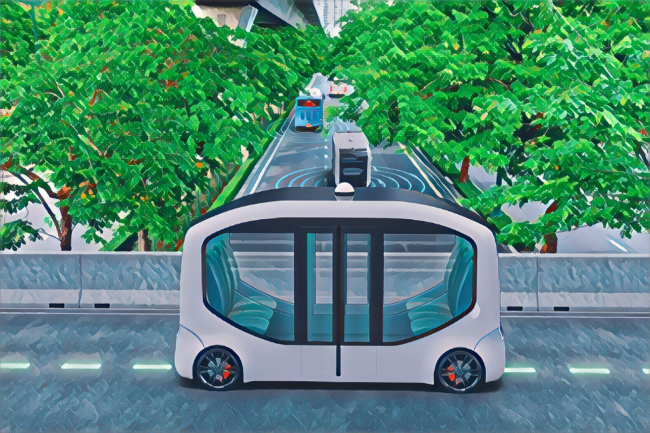Applications
Freight delivery
"Last-mile" delivery to houses or businesses is an expensive step in logistics. Low-speed, small footprint AVs have the potential of slashing direct costs (drivers) and indirect costs (congestion from large vehicles often double parked). "Middle-mile" delivery transfers goods from a distribution centre to a fulfilment facility. The insurability of such delivery depends on the location complexity and risk contributors such as weather, congestion, the presence of pedestrians and cyclists. These factors can create risky conditions that trigger aggressive driving or delay time-sensitive goods delivery.
Simulation brings to light location risk areas and helps insurers understand their exposure for low-speed scratch and dent claims as well as potential losses of the damaged cargo. With these insights they can optimize their policy pricing and extend product offerings to a single customer.

Passenger transport
Trade events and tourist hotspots are synonymous with traffic delays. The travel and hospitality industry often face the need of seamlessly moving people from one location to another one. Fleets of the popular robo-shuttles are ideally positioned to efficiently reduce waiting times with a speedy service that can be on demand and around-the-clock. However, with the underlying technology still developing, passenger experience and acceptance will depend on a safe, reliable, and smooth journey while commercial success will require careful balance of the scope and flexibility of the AV service.
Simulation of different deployment scenarios (including all combinations of fleet sizes and routes) can help build a robust business case and fine-tune the operating plan for the AV operator. The driving risk profile can inform the premium setting and the associated policy conditions or limitations from the AV Insurer.

Niche applications
SafeAI has announced an agreement with Siemens to create an autonomous, electric fleet for Japan-based construction company Obayashi. This partnership is yet another sign of automated driving spreading into ever more nooks and crannies where vehicles operate.
The project also incorporates an autonomy analytics suite. SIMULYTIC helps accelerate the deployment of autonomous vehicles by offering a platform accessible to regulators, government, insurance, tech developers and equipment operators. By creating a digital replica of the autonomous vehicle in its deployment environment, we can use our simulation technology to provide independent safety and performance analytics for both SafeAI and Obayashi. Read more about the project

Our approach
Artificial intelligence
The core of our product is the analysis derived from the simulation results.
The synthetic history we generate in a batch process covers thousands of simulated variations. We process the resulting database of trajectories through proprietary AI technologies with a focus on insurance risk. We develop insights tailored to the industry to help you understand key risk metrics like frequency and severity of AV incidents where they are going to be deployed.
With the power of a full synthetic history, we go further than what’s possible with telematics data and produce near-misses as well as shedding light into liability and detailed claim costs resulting from injuries or vehicle damage.
Simulation
AVs undergo extensive development testing that includes trials on proving grounds, pilots on public roads and rigorous edge case simulations. Those techniques, while excellent for in-depth troubleshooting, fall short when trying to understand risk, operational service levels and passenger comfort for an entire operation in a new environment.
Addressing this need is at the heart of the SIMULYTIC offering.
We have put together a simulation platform that draws on best-in-class simulation for ADAS, traffic engineering and AV development. We co-simulate in the cloud with the ADAS simulator orchestrating and feeding the AV simulator with all real-time inputs, while the traffic simulator controls in the background all human drivers, pedestrians, bicycles and other road actors.
